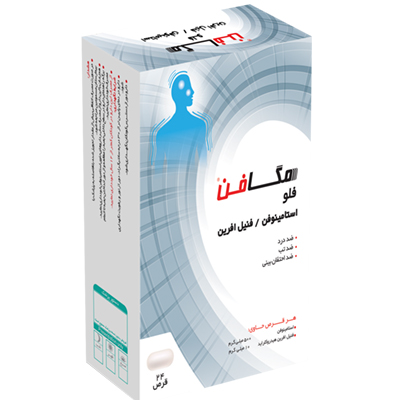In today's hectic world, where thousands of diseases with common symptoms and misleading appearances threaten human physical and mental health, accurate and scientific understanding of the signs and symptoms of skin disorders has gained unprecedented importance. One of the most complex and at the same time most neglected skin diseases is psoriasis; a chronic and inflammatory disorder that sometimes silently erodes the human psyche and appearance. More than just a skin abnormality, this disease acts as a mirror that displays hidden messages from within the body and the reactions of the immune system.
In the face of such a phenomenon, the fundamental question arises: what are the symptoms of psoriasis? Should we be satisfied with only dryness and superficial peeling, or should we also look for signs of internal inflammation, hidden pain, and systemic disorders in the deeper layers of the symptoms? This is where a thorough understanding and comprehensive analysis of the symptoms of psoriasis is not only a medical necessity but also a cultural and social duty. Many sufferers struggle with this disease for years without knowing its name or having a proper understanding of its nature.
What is often overlooked is the complexity and diversity of psoriasis symptoms in adults. Contrary to popular belief, the condition is not limited to red, scaly patches in specific areas; it can also manifest as joint pain, chronic fatigue, and even depression and social isolation. Therefore, understanding the multifaceted nature of these symptoms can lead to effective, compassionate, and accurate treatment.
General symptoms of psoriasis
It is important to be aware of the general signs and symptoms of psoriasis, as this chronic skin condition can have a wide-ranging impact on a person's physical and mental health. Early detection of symptoms not only speeds up the treatment process but also prevents more serious complications such as: Psoriatic arthritis or psychological problems caused by the undesirable appearance of the skin. Many patients are confused in the early stages of the disease and mistake the symptoms for other skin diseases; therefore, a full awareness of the specific symptoms of psoriasis helps the patient and the doctor to be on the right treatment path.
Psoriasis is not just a superficial disease; it can affect the body's immune system and lead to systemic inflammation, which ultimately greatly reduces the patient's quality of life. On the other hand, awareness of the symptoms of psoriasis also helps the patient's family and those around them to provide better support and play a more effective role in managing the disease. Below, we will examine the symptoms of psoriasis in detail.
Psoriasis symptoms: Red, scaly patches are a telltale sign of the disease
One of the most common and obvious symptoms of psoriasis is the appearance of red patches on the skin that are covered with silvery scales. These plaques are usually found on areas such as the elbows, knees, scalp, and lower back, and are very distinctive and recognizable due to the abnormal thickness of the skin and inflammation. These patches may be small at first, but gradually grow and connect together, increasing the size of the affected area. In addition to their unsightly appearance, these areas may cause a burning sensation and discomfort for the sufferer.
Early recognition of these red, scaly patches, one of the main symptoms of psoriasis, plays an important role in initiating timely treatment and preventing the spread of the disease. Many patients initially mistake these symptoms for normal dry skin or skin sensitivity, while correct diagnosis can significantly improve the care and management of the disease. Use of ointments and creams containing mometasone furoate, such as cream and Megacort ointment It can be effective in reducing these cases.
Itching and Burning: A Look at the Most Painful Symptoms of Psoriasis
Itching and burning of the skin are among the symptoms of psoriasis that many patients feel very uncomfortable and restless because of. This itching is often more severe in the areas of red, scaly plaques and can significantly affect a person's quality of life. Irritation of the skin by repeated scratching may exacerbate inflammation and accelerate scaling, leading to a painful and chronic cycle.
On the other hand, itching and burning, especially at night, disrupt patients' sleep, leading to chronic fatigue and decreased concentration during the day. Therefore, controlling these two symptoms is of great importance and should be taken seriously as one of the key symptoms of psoriasis. Topical treatments and anti-inflammatory drugs can help reduce these symptoms, but paying attention to the patient's psychological condition is also effective in reducing the severity of these symptoms.
Psoriasis symptoms: Thickening of the skin and tangible changes in skin texture
Thickening of the skin is another prominent symptom of psoriasis, which is the result of an abnormal increase in the rate at which skin cells divide. This process causes the affected areas to appear raised, hard, and thick compared to the surrounding healthy skin. This abnormal thickening of the skin, along with inflammation, can affect the appearance of the affected areas and can also be uncomfortable for the sufferer.
This symptom is usually seen in susceptible areas such as the elbows, knees, and scalp and can lead to a decrease in skin elasticity in those areas. Thickening of the skin also raises cosmetic concerns, as its raised and rough appearance contrasts greatly with the surrounding skin. Therefore, recognizing and paying attention to these psoriasis symptoms is crucial for timely treatment, as controlling the process of skin thickening helps reduce other complications of the disease.
Cracking and bleeding are unpleasant and worrisome side effects.
One of the serious problems that may be observed in patients with psoriasis is cracking and bleeding of the skin, which occurs due to severe dryness and frequent peeling. These cracks are especially common in high-mobility areas such as joints, elbows and knees and can allow microbes to enter and cause skin infections. Despite the superficial appearance, this can lead to deeper complications and complicate the treatment process.
Since cracking and bleeding are symptoms of psoriasis that usually require specialized care, patients should keep their skin moisturized and avoid irritants. Using healing and anti-inflammatory ointments can also help reduce these complications. Paying attention to these symptoms helps prevent infections and improve quality of life.
Symptoms of psoriasis in nails; changes in color and thickness, signs that should not be ignored
Nails are one of the parts of the body that experience significant changes in many psoriasis patients. Among the most important symptoms of psoriasis in the nails are a change in color to yellow or brown and abnormal thickness of the nail. These changes are usually accompanied by an unpleasant feeling and sometimes brittle nails and can lead to a decrease in the quality of a person's daily life.
These symptoms are caused by inflammation in the nail bed and an increase in the rate of nail cell growth, which changes the normal shape and structure of the nail. It is important to pay attention to these nail symptoms because they can sometimes be a sign of the disease progressing to psoriatic arthritis. Early recognition of these symptoms and initiation of appropriate treatment can prevent further damage and speed up the process of nail regeneration.
The appearance of holes and indentations in the nail is an indicator for a more accurate diagnosis.
One of the more obvious and specialized signs of psoriasis is the presence of tiny holes or pits on the surface of the nail. These symptoms of psoriasis are caused by chronic inflammation in the nail matrix and disruption of its normal growth, which leads to an abnormal and uneven appearance of the nails. These holes typically appear as small, scattered spots throughout the nail and may be accompanied by cracking and discoloration.
Recognizing this specific symptom helps doctors differentiate the condition from other nail problems, such as fungal infections or eczema. Therefore, paying attention to these symptoms in the nails is of particular importance and is known as one of the accurate indicators of psoriasis symptoms. Timely treatment of these symptoms can help maintain healthy nails and prevent further damage.
Nail separation from its bed and its consequences
In advanced stages of psoriasis, one of the nail symptoms observed is the separation of the nail from its bed, which is called "onycholysis." This separation may occur for various reasons, including chronic inflammation, dryness, and weakness of the nail, and causes pain and sensitivity in the affected area. Onycholysis is a symptom of psoriasis that clearly indicates the severity of the disease and serious damage to the nail structure.
This condition may be minor at first, but if left untreated, it can lead to complete nail loss and secondary infections. Early recognition and management of this condition is important, as it can help maintain nail health and prevent further disability. Special care and specialized topical treatments are usually necessary to control this condition.
Psoriatic arthritis symptoms: Joint pain and swelling, a warning sign of systemic inflammation
Psoriasis is not limited to the skin, and in about 30 percent of patients, inflammation and pain in the joints, called psoriatic arthritis, occur. One of the most important symptoms of psoriasis in this area is pain and swelling of the joints, which may begin suddenly or gradually. This pain is usually accompanied by inflammation and causes restrictions in movement and a decrease in the patient's quality of life.
Joint swelling can occur anywhere in the body but is most often seen in the hands, feet, knees, and spine. If left untreated, chronic inflammation can lead to joint destruction and permanent disability. Therefore, it is important to recognize this vital sign and seek prompt referral to a rheumatologist to begin treatment.
One of the serious consequences of psoriatic arthritis is limited range of motion in the joints, which is caused by inflammation and swelling. Over time, these symptoms of psoriasis can reduce joint flexibility and make it difficult to perform daily activities. Patients often experience stiffness and stiffness in the joints, which is especially severe in the morning.
Limited mobility can also have negative psychological effects, as it prevents a person from performing simple tasks of daily living and reduces their independence. Early diagnosis and appropriate treatment of arthritis, including anti-inflammatory medications and physical therapy, can help improve joint function and prevent disease progression. For this reason, awareness of this symptom is an important part of managing psoriasis.
Stiff joints are the most common symptom of psoriatic arthritis.
Joint stiffness is a common complaint in patients with psoriatic arthritis, which manifests as a feeling of stiffness and stiffness in the joints. These symptoms of psoriasis are especially severe in the early morning hours or after prolonged inactivity and can cause discomfort and reduced mobility. This condition is caused by chronic inflammation of the joints and tissue changes around them.
If not managed in time, joint stiffness can lead to permanent limitation of movement and even joint damage. Hence, treatment plans including regular exercise, anti-inflammatory medications, and physiotherapy care are crucial to reduce these symptoms. Awareness of this symptom helps patients seek treatment earlier and improve their quality of life.
Chronic fatigue, a non-cutaneous but important symptom in psoriasis
Chronic fatigue is a lesser-known but very important symptom of psoriasis that many sufferers experience. Unlike normal fatigue, this type of fatigue does not go away with regular rest and can have a profound impact on a person’s daily abilities and mood. These symptoms of psoriasis are caused by systemic inflammation and an overactive immune system that affects the entire body, beyond the skin.
Chronic fatigue can lead to decreased motivation, poor concentration, and even psychological problems like depression. Therefore, recognizing and managing this symptom is important in addition to treating the skin symptoms. Doctors usually recommend fatigue management strategies to patients, along with topical and systemic treatments, so they can live a better life.
Fever and night sweats, rare psoriasis symptoms
Fever and night sweats are rare symptoms that may be seen in some patients with psoriasis. These symptoms indicate severe systemic inflammation and a widespread body response to the disease. When these symptoms of psoriasis occur, they usually indicate a more complex condition of the disease and require more specialized investigation and treatment.
Recurrent fevers can reduce energy and increase discomfort, and night sweats can disrupt sleep. In addition to the physical impact, these conditions also place a great psychological burden on the patient. For this reason, the observation of these symptoms should be taken seriously and the treating physician should closely monitor the disease to prevent more severe complications.
Psoriasis Symptoms in Different Age Groups: Understanding the Differences for Better Diagnosis
Psoriasis symptoms may differ in children, adults, and the elderly, and awareness of these can help with better diagnosis and treatment. For example, children typically have smaller, less thick plaques, while adults may experience more severe symptoms, including psoriatic arthritis. The elderly may also experience different or more complex symptoms due to a weakened immune system.
These differences in psoriasis symptoms mean that treatments and care must be tailored to the patient's age and condition. It is also crucial to inform parents and caregivers about how symptoms manifest in children so that they can seek medical attention promptly if they notice any changes. Understanding these differences can increase the effectiveness of treatment and improve the quality of life for patients of all ages. Regarding Psoriasis in children We have discussed this in detail in another article.
The role of the immune system in the onset and exacerbation of psoriasis symptoms
Psoriasis is an autoimmune disease in which the body's immune system mistakenly attacks skin cells, causing inflammation and an increase in the rate at which skin cells grow. This overactivity of the immune system is the basis for many of the symptoms of psoriasis, including inflammation, redness, scaling, and thickening of the skin.
Understanding this mechanism will help doctors and patients better understand why the disease remains chronic and why anti-inflammatory and immunomodulatory therapies are important. It will also pave the way for the development of more targeted and effective drugs to reduce symptoms and control the disease. Psoriasis should be recognized as a complex immune disorder that requires specialized and careful care.
Methods for accurately diagnosing psoriasis symptoms to start treatment on time
A correct and timely diagnosis of psoriasis, based on the observation of symptoms of skin, nail, and joint psoriasis, is the first critical step in treatment. Doctors usually make a preliminary diagnosis by clinical examination and observation of characteristic plaques. In doubtful cases, skin biopsy and specialized tests can be used to confirm the disease and rule out other similar diseases.
These accurate diagnostic methods help to choose the best treatment method and prevent complications due to delayed treatment. Early diagnosis and the use of modern diagnostic methods allow patients to recover faster and have a better quality of life. Consequently, the importance of paying attention to symptoms and seeing a doctor in a timely manner should not be overlooked.
Early and timely recognition of psoriasis symptoms is key to successfully controlling the disease and preventing its progression. If left untreated, psoriasis can lead to more severe forms, such as psoriatic arthritis or skin infections, which are much more difficult to manage. Therefore, recognizing and responding quickly to early symptoms is vital.
Conclusion
In conclusion, it can be said that knowing the symptoms of psoriasis is not only a medical necessity, but also a social and cultural responsibility. Although this complex disease is outwardly characterized by skin symptoms such as red patches, scaling, thickening, and cracking of the skin, its depth and dimensions go beyond the surface of the skin.
Psoriasis is an autoimmune disorder that can affect the joints, nails, and even non-skin symptoms such as chronic fatigue and fever. Many sufferers may live with the physical and psychological consequences of the disease for years without a proper diagnosis; however, awareness of the symptoms can pave the way for effective treatment and better control of the disease.
On the other hand, timely detection of early symptoms can not only make the treatment process simpler and faster, but also prevent the development of severe complications such as psoriatic arthritis or motor disabilities. The treatment of this disease is not limited to topical or systemic medications, but also requires a comprehensive approach that includes psychological care, proper nutrition, lifestyle modification, and family support.
To learn more about this disease, read the description of What is psoriasis? Read on. Ultimately, if psoriasis symptoms are properly identified and managed, patients can cope with their condition with a better quality of life and more confidence. This awareness is the first and most important step on the path to controlling and living a healthy life with psoriasis.




